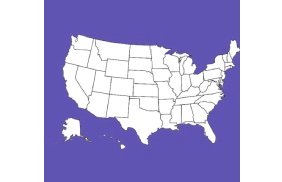Author: Paul Dunford, Co-Founder and VP of Knowledge, Green Check Verified

Contact
https://www.linkedin.com/in/paul-dunford/
In 2014 the Financial Crimes Enforcement Network (FinCEN) issued “BSA Expectations Regarding Marijuana Related Businesses,” a document that laid out how banks and credit unions can serve the cannabis industry in a way that will satisfy their examiners’ expectations. This is predicated on an expectation that a financial institution be able to demonstrate “an understanding of the normal and expected activity for the business, including the types of products to be sold and the type of customers to be served” in order to identify unusual activity. In short, they need to be confident that every dollar that enters the financial system is the result of a state legal sale.
Previously much of this work was done manually, bringing data from point of sale and tracking systems and presenting it in a way that a compliance analyst can assess the legality of cannabis-related deposits. Early programs were often run on spreadsheets that rolled up insights into complex pivot tables that were easy to break and prone to data entry errors. Clearly this is fundamentally a data management exercise, making cannabis banking compliance an ideal problem for technology to solve.
So far there have been two major approaches to managing this risk: those that attempt to work within the existing confines of the financial system and those that seek to introduce novel approaches to address these issues through alternative means.
In the first camp we have automated transaction monitoring and onboarding software. Financial institutions already have solutions like these in place for non-cannabis customers/members, but ecause these aren’t geared towards cannabis similar solutions have emerged that bridge that gap and complement their existing software. This is a tried and tested method already used widely by financial institutions, making it easy for regulators to understand the workflows involved and the data produced, but there is still some human intervention required and the compliance burden is borne predominantly by the bank.
In the second camp we have a few different approaches that involve an alternative payment method that circumvents the prohibitions put in place by Visa, Mastercard, American Express, and Discover in the US. Ideally this takes some of the work off of a financial institution’s plate because the payments provider is responsible for making sure that customer transactions meet state requirements and federal guidance, with the side benefit of pulling cash out of the equation.
The option that involves the heaviest lift is building an alternative credit card network (a new set of “rails”). It’s what Discover did back in the 1980s, but they still struggle with the largest obstacle to acceptance of a new payment solution: widespread adoption. And this has been without facing the additional challenge of managing the issues specific to this high risk industry. Were someone to build the technology it would be a solid solution but they’d still face an uphill battle to get their cards in consumers’ wallets. This is really only for someone ready to play the long game.
A variation on this is a private label “credit card” – think a Macy’s card that you can only use at a single retailer. It’s basically a line of credit extended by the card issuer, so the transactions aren’t sent over the credit card rails and therefore don’t violate the rules of the major networks. The potential shortcoming here is also a potential strength: a consumer is limited on where they can use it, but that means it fosters brand loyalty.
Along those lines, there are solutions that leverage the fact that the ACH network doesn’t prohibit its use for the purchase of marijuana products. These usually involve an app that a customer connects to their bank account or credit card. This involves relatively low effort on the part of the consumer – they can sign up as they wait in line to pay for their purchase. They’re familiar to anyone that’s used the Starbucks app, but like a white-label store card they face the same problems that come with building a new credit card network: adoption. There’s not yet a clear leader in this space, so the app that’s used in one dispensary might not be accepted down the block.
The highest risk is presented by cryptocurrency solutions. On the surface this seems like an ideal option because it sidesteps the financial system entirely… but that’s also what makes it the most difficult for financial regulators to accept. Critical to demonstrating compliance with FinCEN’s guidance is full transparency into the source of funds accepted by a financial institution. While one could presumably argue that it doesn’t matter what FinCEN says in this scenario, at the end of the day all alternative currencies need a way to exit into the “traditional” financial system. Until adoption of alternative currencies reaches critical mass, people will want to move funds back into their bank accounts. For instance, Nevada’s cannabis regulations empower the state to develop an alternative currency that could be used for B2B and B2C cannabis payments but it never got off the ground because no financial institution felt they could confidently demonstrate to FinCEN that they truly understood the source of funds coming into their institution.
Which of these approaches will ultimately solve the cannabis banking problem? Whichever one makes it easiest for financial institutions to feel confident that any activity associated with the cannabis industry is compliant with state law and federal guidance. Even payment apps, cards, and cryptocurrencies – assuming they reach the critical mass necessary for widespread adoption – need an offramp to the mainstream financial system. That doesn’t mean it’s a solution that lies entirely within the four walls of a financial institution, but at the end of the day whatever it is must allow the provider to demonstrate to FinCEN that all transactions are the result of state legal sales.
Of course, federal legalization changes this landscape entirely, but we’ll cross that bridge when we come to it.




